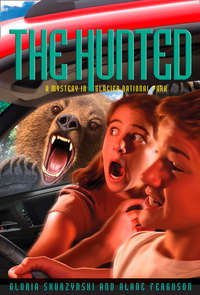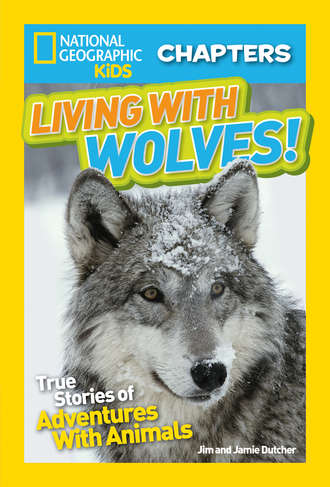
Полная версия
National Geographic Kids Chapters: Living With Wolves!: True Stories of Adventures With Animals

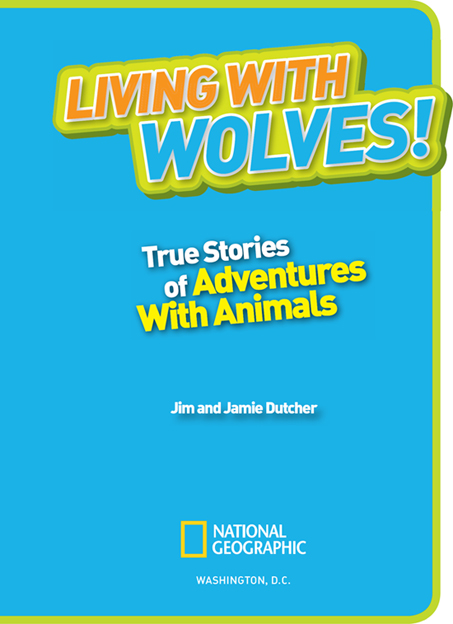
Copyright © 2016 National Geographic Partners, LLC
All rights reserved. Reproduction of the whole or any part of the contents without written permission from the publisher is prohibited.
Since 1888, the National Geographic Society has funded more than 12,000 research, exploration, and preservation projects around the world. The Society receives funds from National Geographic Partners, LLC, funded in part by your purchase. A portion of the proceeds from this book supports this vital work. To learn more, visit www.natgeo.com/info.
NATIONAL GEOGRAPHIC and Yellow Border Design are trademarks of the National Geographic Society, used under license.
For more information, please visit www.nationalgeographic.com, call 1-800-647-5463, or write to the following address:
National Geographic Partners
1145 17th Street N.W.
Washington, D.C. 20036-4688 U.S.A.
Visit us online at www.nationalgeographic.com/books
For librarians and teachers: www.ngchildrensbooks.org
National Geographic supports K–12 educators with ELA Common Core Resources. Visit natgeoed.org/commoncore for more information.
More for kids from National Geographic: kids.nationalgeographic.com
For rights or permissions inquiries, please contact National Geographic Books Subsidiary Rights: ngbookrights@ngs.org
Trade paperback
ISBN: 978-1-4263-2563-2
Reinforced library edition
ISBN: 978-1-4263-2564-9
eBook ISBN: 978-1-4263-2569-4
Contributing writer: Moira Rose Donohue
Designer: Ruth Ann Thompson
Art director: Sanjida Rashid
v3.1
Version: 2017-07-10

Cover
Title Page
Copyright
KAMOTS: Howling With Wolves!
Chapter 1: Sign of the Wolf
Chapter 2: Leader of the Pack
Chapter 3: Cry Wolf
LAKOTA AND MATSI: My Bodyguard!
Chapter 1: Class Clown
Chapter 2: Once Bitten, Twice Shy
Chapter 3: You’ve Got a Friend
CHEMUKH: Cinderella Wolf!
Chapter 1: Look Into My Eyes
Chapter 2: Happy Birthday!
Chapter 3: New Pups on the Block
DON’T MISS!
More Information
Credits
Dedication
Acknowledgments
Author’s Note
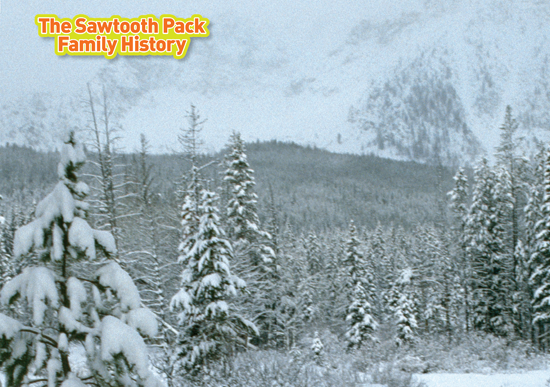
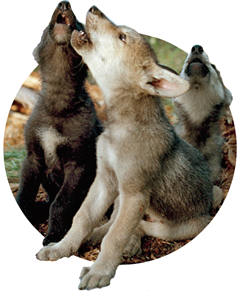
FIRST LITTER OF PUPS
KAMOTS – “Freedom” (male)
LAKOTA – “Friend” (male, brother to Kamots)
MOTAKI – “Shadow” (female)
AIPUYI – “One Who Speaks a Lot” (female)
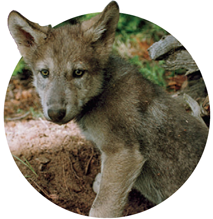
SECOND LITTER OF PUPS
AMANI – “Speaks the Truth” (male)
MOTOMO – “He Who Goes First” (male)
MATSI – “Sweet and Brave” (male)
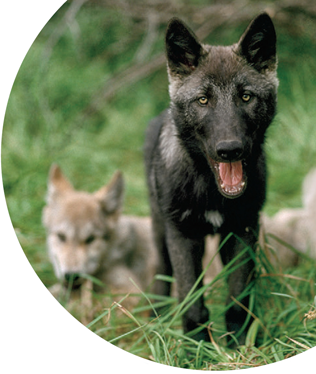
THIRD LITTER OF PUPS
CHEMUKH – “Black” (female)
WAHOTS – “Likes to Howl” (male)
WYAKIN – “Spirit Guide” (female, sister to Wahots)
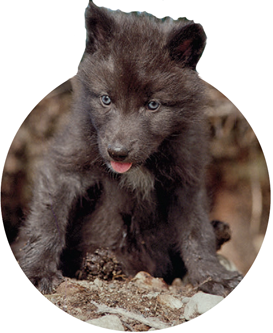
FOURTH LITTER THE SAWTOOTH PUPS All Brothers and Sisters
PIYIP – “Boy” (male)
AYET – “Girl” (female)
MOTAKI – “Shadow” (female)
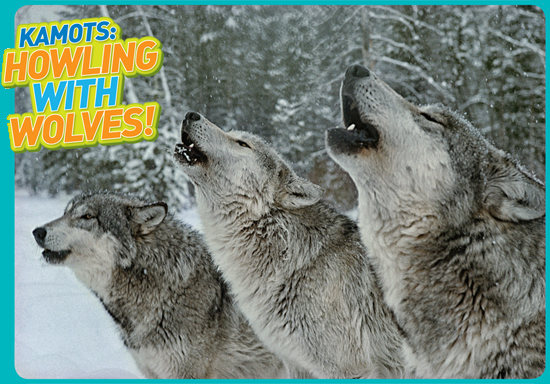
These wolves join together for a group howl.

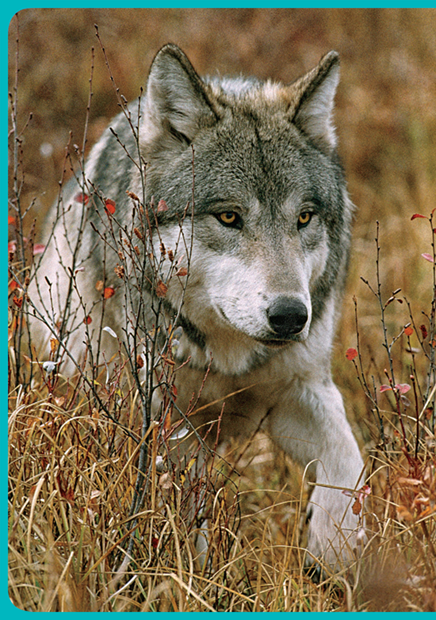
A wolf crouches low in a meadow to avoid being spotted.
I was 16 years old when I first looked into the golden eyes of a gray wolf. I was working as a cowboy on a ranch in Wyoming. I was rounding up a herd of horses just as the sun was coming up. Suddenly, the horses became jittery. They pawed the ground. I felt a prickle on the back of my neck. And that’s when I saw him. He was standing across the meadow, watching me.
Did You Know?
All dogs are descended from wolves. That means the giant Irish wolfhound and the tiny Chihuahua are related to wolves—and to each other!
I sat atop my horse, watching him. Slowly we circled each other. He seemed curious.
I was curious, too. We stared at each other for minutes. Then the wolf turned and trotted off.
My name is Jim Dutcher. I’ve always been interested in how animals live. That’s why I make films about wild animals. I’ve made movies about sea turtles, beavers, and cougars. After I finished the film about cougars, I needed a new idea. I decided to go back to that ranch in Wyoming.
I scrambled up a rocky mountain and looked around. Just like before, I felt like something, or someone, was watching me. I looked down to the rocky ledge (sounds like LEHJ) below me. Sure enough, a wolf was standing there. Like the wolf I had seen long ago, he stared at me. And I stared back. Then he disappeared.
This has to be a sign, I thought. My next movie should be about wolves.
Before I could start filming, I had to do my homework. I needed to learn about wolves. I read books and spoke to experts. I learned that the adult male gray wolf weighs between 70 and 130 pounds (32–59 kg). I was surprised to find out that wild wolves only live for about five years. But the most important thing I discovered is that wolves are social (sounds like SOH-shul) animals. They live in packs. Packs are a lot like human families. That gave me an idea. I would film the day-to-day life of a pack.
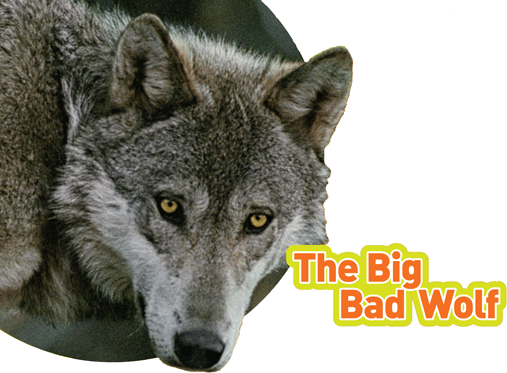
Wolves in fairy tales are mean and scary. In “Little Red Riding Hood,” the wolf eats Grandma. Then he tries to trick Little Red Riding Hood so he can eat her, too! Wolves are smart. But they rarely attack people. Bears and cougars are more dangerous to people, but even they rarely attack without cause. In the past 100 years, only two people were possibly killed by wolves in North America. And those stories about people turning into wolves? They’re just made up. There are no such things as werewolves!
But wolves usually hide from people. They like their privacy. And they like to roam. Wolves walk at a rate of about 5 miles an hour (8 km/h). But when they are chasing prey, they can run 35 miles an hour (56 km/h) or faster. They can cover a lot of distance in a day—sometimes 50 miles (80 km)! To make a good film about these shy animals, I’d need a special plan.
Other people had studied wolves in small areas—less than 3 acres (1.2 ha). That was too small. It wouldn’t give the wolves enough privacy and room to roam. I wanted the animals to be themselves so that I could see what their lives were really like. To do that, I figured I needed at least 25 acres (10.1 ha). That’s about the size of 15 soccer fields! And I had to find just the right spot, too. It took me almost a year of searching to find it. One day, I stood in a meadow in Idaho. I looked around in all directions. I saw forests, a stream, and the snow-covered mountains of the Sawtooth Range.
“This is perfect,” I whispered. The land was part of a national forest. The U.S. government said I could use it for my project. I gathered a three-person crew. We built a tall fence around the area. It took a lot of work to fence in such a big area.
Building a wolf territory was only part of my plan. To see how the wolves lived, I had to live with the wolves. My crew and I put up several tents, including a special tent called a yurt (sounds like YERT). A yurt is a round tent. It has a roof shaped like an upside-down ice-cream cone to help snow slide off. That would be handy in the winter.
Electricity would have been handy, too. But this was the wilderness. We would have to use candles and a wood stove. We had no running water. And we had no bathroom. We had to build an old-fashioned outhouse. Finally, with wolves living all around us, we’d need to fence in the tents so the wolves wouldn’t steal our gear at night.
All that was missing now was the wolves. How would I find them? The last time wolves were seen in the Sawtooth mountains was 50 years ago.
“I’ll have to start my own pack,” I said to my crew. “Let’s call it the Sawtooth Pack.” I hoped that if I raised the wolves from pups, they would trust me. Then I would be able to photograph them up close. But I knew that if they trusted me, they would never be able to live in the wild. People hunt wolves. And ranchers sometimes kill wolves to protect their livestock. That’s why wolves hide. I would have to plan for that later.
Did You Know?
The wolverine is NOT a wolf. It looks like a bear, but it’s the largest member of the weasel family. Oh, and it’s also a comic book superhero!
Finding wolf pups isn’t easy. I scoured wolf research centers and eventually found four pups. They were all newborns. Two were brothers, and they looked alike. I named them Kamots (sounds like ka-MAHTS) and Lakota (sounds like la-KOH-tah). Kamots means “freedom” in the Blackfoot Indian language. Lakota means “friend” in Lakota-Sioux.
The other two were females. One was very dark. I named her Motaki (sounds like moh-TAH-key). That means “shadow” in Blackfoot. The other one made a lot of noise. I called her Aipuyi (sounds like eye-POO-ee), which means “one who speaks a lot.”
I knew that they were too young to live alone in the camp. I made them a small pen in the yurt. I thought I could live my normal life while I was taking care of them. Boy, was I wrong! They had to be fed every four to six hours. They guzzled formula from bottles. I called in my family and crew. Together, we fed the wiggly pups. With all that eating, the pups grew quickly. Within a month or two, they weighed 20 pounds (9 kg)! They were curious about everything. But one pup was more curious than the others.

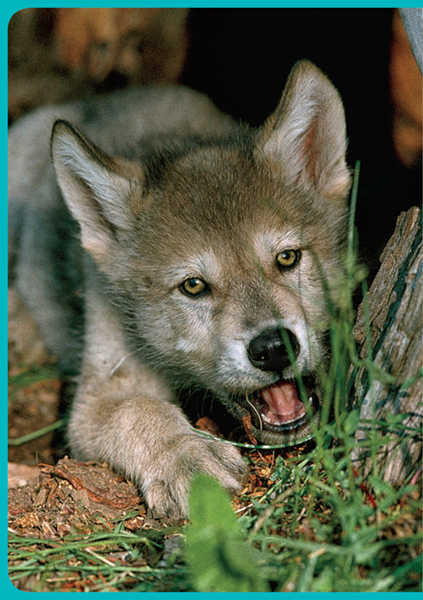
As a puppy, Kamots was very curious. Here he nibbles on a log to see what it tastes like.
Kamots wanted to explore everything. He and the other pups blew through the tent like little hurricanes. They snatched clothes, straps, tools, shoes—anything that wasn’t nailed down. In minutes, they had chewed them to bits!
It was time for them to move out of the tent. But they were still too small for the big territory.
“What should we do with them?” I asked my crew. “They need a safe place.” Then I figured it out. We fenced in an area just outside the yurt. That way we could keep an eye on them. And there would be fewer things for them to chew on. Of course, there was always the bottom of my shirt to nibble. And sometimes … Ouch! That was my finger!
Did You Know?
A wolf has 42 very sharp, curved teeth. These help the wolf hold on to its prey. The wolf’s canine teeth can be an inch (2.5 cm) long.
Within a few months, I knew they were ready for the big enclosure. I felt like I was sending my kids off to school for the first time. I fumbled with the latch while the pups jumped up and whined with excitement. I opened the gate, and they charged out. Guess who was right out in front? Kamots.
Kamots was fearless. He hopped onto a log and walked along it, like a tight-rope walker. When he was tired of that game, he wanted down. Jumping off was scarier than hopping on. But he only hesitated for a second. I could see that he had the gift of confidence.
The other pups followed Kamots around like he was in charge. I wasn’t really surprised. I had noticed that Kamots was braver and more curious right from the start—a natural leader.
Every wolf pack needs a leader. The lead wolf is called the alpha (sounds like AL-fuh). He’s like the captain of a ship. He goes first when they explore. If he senses danger, he makes sure the other wolves are safe before taking care of himself.
Before long, I saw other signs that Kamots was the alpha wolf. He howled first, keeping his head higher than the others when he did. Arroooo! And he was the first to greet human visitors. But the most astonishing sign came as soon as I began feeding the wolves like they were in the wild.
I fed them raw meat every three to five days. I talked to local officials. They allowed me to find dead animals that had been hit by cars. That way they wouldn’t go to waste, and the wolves would have food to eat. Kamots ran to the food first.
But when the other wolves tried to join him, he glared at them and bared his teeth. He snarled and flattened his ears. Even his brother, Lakota, had to wait his turn. I was shocked to see Kamots act like this. But then I understood. The alpha says who eats when. By telling the other wolves to wait, Kamots was telling them that he was in charge.
Did You Know?
Wolves have super hearing. They can hear sounds as far away as 10 miles (16 km) in open areas. And they can hear high-pitched sounds that humans can’t!
When Kamots growled at the others, he was acting like a parent scolding a child. There are a lot of ways a wolf pack is like a family. I once heard about a wolf that was kicked in the jaw by a moose. His jaw was broken, and he couldn’t chew meat. His pack chewed up food and fed it to him. Like a human family, they took care of a hurt member.
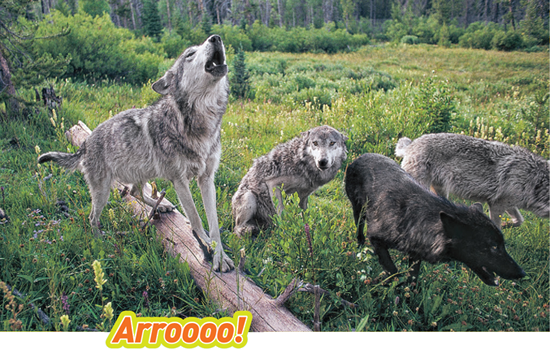
Wolves howl for a lot of reasons. It doesn’t seem to matter if the moon is out or not. Why do they howl? Sometimes it’s to call to each other. Sometimes it’s because they have a full belly. Often they howl because they enjoy it—it’s like singing for them. Each wolf has a unique sound. We learned to identify which wolf was howling. We thought that Lakota had the prettiest howl. Wolves start howling when they are pups. But it sounds more like yodeling!
Only once did I ever see Kamots outsmarted. It was at dinnertime. And it took two wolves to do it. One wolf crept up, snatched a very small piece of meat and scampered off. His partner in crime waited his turn. As soon as Kamots ran after the first wolf with the meat, the second wolf lunged and grabbed a bigger chunk of meat. The second wolf raced off in the opposite direction. Kamots saw him out of the corner of his eye and chased him. Meanwhile, the first wolf ran back to dinner and grabbed an even larger hunk. Kamots never fell for this trick again!
Конец ознакомительного фрагмента.
Текст предоставлен ООО «ЛитРес».
Прочитайте эту книгу целиком, купив полную легальную версию на ЛитРес.
Безопасно оплатить книгу можно банковской картой Visa, MasterCard, Maestro, со счета мобильного телефона, с платежного терминала, в салоне МТС или Связной, через PayPal, WebMoney, Яндекс.Деньги, QIWI Кошелек, бонусными картами или другим удобным Вам способом.






